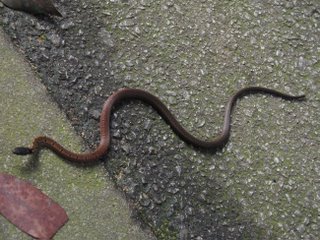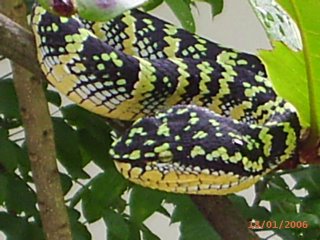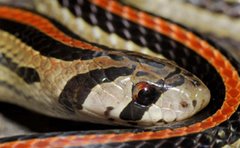
Chua Siew Chin found a Black-headed Collared Snake (Sibynophis melanocephalus) on the tarmac road leading to the summit of Bukit Timah Nature Reserve on 3 November 2006 at about 9.30 am.
This non-venomous snake is shy and harmless (Lim & Lim, 1992). Diurnal and terrestrial, this snake inhabits lowland areas (Lim & Lee, 1989) such as rainforests (Cox et al., 1998) and agricultural areas (Lim & Lim, 1992). It is usually found near streams (Cox et al., 1998) and among the grass and bushes (Lim & Lee, 1989).
Skinks, frogs, tadpoles and grasshoppers features in its diet (Cox et al., 1998). This oviparous species (Lim & Lee, 1989; Lim & Lim, 1992) can grow up to 80 cm in total length (Cox et al., 1998).
It occurs in southern Thailand, Malaysia, Singapore and Indonesia east to Java (Cox et al., 1998).
REFERENCES
Cox, M. J., van Dijk, P. P., Nabhitabhata, J. & Thirakhupt, K., 1998. A photographic guide to snakes and other reptiles of Peninsula Malaysia, Singapore and Thailand. New Holland Publishers (UK) Ltd, p. 57.
Lim, F. L. K. & Lee, M. T. M., 1989. Fascinating Snakes of Southeast Asia – an Introduction. Tropical Press, Kuala Lumpur, p. 57.
Lim, K. K. P. & Lim, F. L. K., 1992. A Guide To The Amphibians & Reptiles Of Singapore. Singapore Science Centre, p. 57.

















